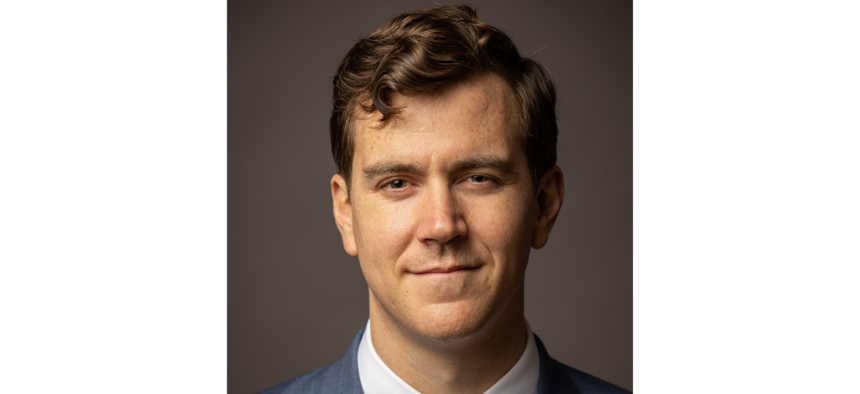John O’Leary, deputy secretary of energy in the Executive Chamber, sees his role as taking directives from Gov. Kathy Hochul on energy and environmental policy and then making them a reality. O’Leary joined the Hochul administration a month after the governor took office, and he also served as a senior policy adviser on energy and finance for five years under then-Gov. Andrew Cuomo and in several private sector posts related to energy and sustainability. This interview has been edited for length and clarity.
In your position, how do you influence the state’s climate initiatives and work toward reaching the state’s goals set by the 2019 Climate Leadership and Community Protection Act?
The governor sets the agenda and sets the tone. She’s been clear that she wants to lead the way on climate change. So that’s the top-level direction from the governor. Let’s be out in front, let’s lead the nation, let’s break new ground. And we take that and we put forward proposals in the State of the State and in the executive budget that meet that directive. So over the past two and half years, the governor has put forward things like all-electric new construction, a proposal related to the cap-and-invest program, investments in energy affordability as well as other initiatives: major investments in renewable energy, transmission, offshore wind.
When we think about it sector by sector, the governor’s also done very exciting things in the building decarbonization space and in the clean transportation space as well. So our position here in the governor’s office and at the state agencies is to take what the Legislature and the governor put forward in the law and new initiatives, and translate those into real world action that benefits New Yorkers.
You previously told Politico that inflation, especially for clean energy, is particularly troublesome. How, tangibly, is this affecting the state’s work and how is the state working to continue its actions despite this?
That is not something that’s unique to New York coming out of COVID, supply chain issues, geopolitical disruption and other market shocks that have happened over the past years have led to inflation that’s being felt on a global scale. You see that showing up in a lot of the materials and commodities that support clean energy projects. So we’re seeing developers come forward with, in our case, petitions to the Public Service Commission making the case that these global forces are impacting their projects and they’re looking to work with the state on pathways forward that can keep infrastructure moving forward. At the same time, we’re seeing a lot of projects that have gotten to a sufficient state of maturity moving forward in construction.
So there are some real bright spots as well. The South Fork Wind project is a great example. The on-land portion of that project is done, and we had steel in the water for the first time in New York (recently) and that project can move forward because it’s sufficiently developed. The materials and the EPCs and sort of all the components that go into the project are locked in so they can move forward with the construction. Similarly, the Champlain Hudson Power Express project, which is going to power one-fifth of New York City with renewable energy, it’s sort of a staggering scale of a project, that project is now moving forward.
Thinking on a global scale, how impactful would it be if New York state did reach its goals by 2030?
I think it can have really an outsized impact that goes beyond just the borders of New York. New York can show the way forward, how you can grow the economy, create jobs, protect affordability, invest in disadvantaged communities, right these historic wrongs related to environmental injustices that have taken place. We can show, and we are showing, how that can be done and be done effectively and be done in a way that benefits the people of New York. By leading in that way, we can show other states and other countries that not only is it possible, it’s also in the best interests of the people.
NEXT STORY: This week’s biggest Winners & Losers


